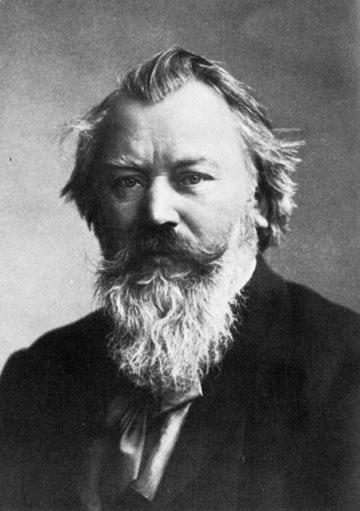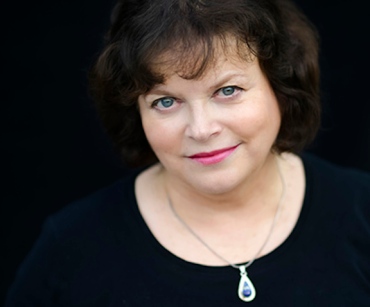The Well-Tempered Ear
Classical music: The UW Choral Union and UW Symphony Orchestra deliver outstanding performances of great music by Mozart and Brahms | December 12, 2017
By Jacob Stockinger
Here is a special posting, a review written by frequent guest critic and writer for this blog, John W. Barker. Barker (below) is an emeritus professor of Medieval history at the University of Wisconsin-Madison. He also is a well-known classical music critic who writes for Isthmus and the American Record Guide, and who hosts an early music show once a month on Sunday morning on WORT-FM 89.9. For years, he served on the Board of Advisors for the Madison Early Music Festival and frequently gives pre-concert lectures in Madison. Barker also took the performance photos.
By John W. Barker
The program for the first concert this season by the UW Choral Union (below), mercifully, had nothing whatsoever to do with Christmas, and just offered great music.
There were only two works, one by Brahms and the other by Mozart. Surefire!
Johannes Brahms composed three relatively short works for chorus, without soloists, and orchestra. Of these, I wish conductors would get busy with two of them in particular. The Gesang der Parzen (Song of the Fates) and Nänie are simply superb works by one of the greatest of all choral composers.
The third, the Schicksalslied (Song of Destiny), Op. 54, I would rate just a bit lower for musical content, but that is the one of the three that is more frequently performed, and that was the one we heard.
That said, there is much quite beautiful music in the piece, which sets a poem of Friedrich Hölderlin that moves from anxiety to desperation. Brahms (below) preceded the choral setting with a serene introduction that—to satisfy his aesthetics if not the poet’s—he repeats at the end to restore order.
Conductor Beverley Taylor (below) employed rather broad tempos, but this enabled her to bring out some of the melodic material with great beauty.
And, with a chorus of some 124 singers, she was able to give the music tremendous sonority, if a bit at the price of German diction. With the very good UW Symphony Orchestra in fine fettle, too, this was an excellent performance that should alert listeners to neglected treasures.
The main work was the unfinished “Great” Mass in C minor, K. 427, by Mozart (below). This is music inspired by the composer’s marriage and by the new (for him) artistic climate of Vienna. Even incomplete – it has a fragmentary “Credo” and is missing an “Agnus Dei”) — it still stands, with his also uncompleted Requiem, as a towering masterpiece of his sacred choral output.
Taylor displayed a fine feeling for both the overall and individual qualities of the work, projecting them with vigor and discipline.
There were four student soloists (below), with promising young voices.
But eventually the standout proved to be soprano Sarah Richardson (below). The operatic-style aria, “Et incarnatus est” from the “Credo” was apparently sung by Mozart’s wife in its preliminary performance, and is often heard as a separate solo number today. This was sung by Richardson (below) with skill and eloquence. (You can hear the aria in the YouTube video at the bottom.)
This chorus was really a bit oversized for a work like this, but Taylor made it the real star of the performance, in singing with both power and precision.
A truly rewarding concert!
Tags: aesthetic, Agnus Dei, American Record Guide, anxiety, aria, artistic, Arts, beautiful, Beverly Taylor, Cello, choral music, Christmas, Classical music, climate, composer, content, Credo, critic, desperation, diction, discipline, Early music, eloquence, emeritus, esthetic, feeling, fettle, fine, fragment, German, great, History, Holiday, incomplete, individual, introduction, Isthmus, Jacob Stockinger, Johannes Brahms, John W. Barker, lecture, Madison, Madison Early Music Festival, Marriage, mass, masterpiece, material, Medieval, melodic, melody, Mozart, Music, musical, Nanie, opera, operatic, Orchestra, order, output, photo, photograph, piece, poem, poet, power, precision, preformance, professor, quality, Requiem, restore, review, rewarding, sacred, Season, serene, setting, short, singer, skill, soloists, Song of Destiny, Song of the Fates, star, Student, superb, Tempo, towering, unfinished, United States, University of Wisconsin-Madison School of Music, University of Wisconsin–Madison, UW Choral Union, UW Symphony Orchestra, Vienna, vigor, Viola, Violin, vocal music, voice, wife, Wisconsin, Wolfgang Amadeus Mozart, work, WORT-FM 89.9, YouTube
2 Comments »
Leave a comment Cancel reply
This site uses Akismet to reduce spam. Learn how your comment data is processed.
- April 2024
- March 2024
- February 2024
- January 2024
- December 2023
- November 2023
- October 2023
- September 2023
- August 2023
- July 2023
- June 2023
- May 2023
- April 2023
- March 2023
- February 2023
- January 2023
- December 2022
- October 2022
- September 2022
- June 2022
- May 2022
- April 2022
- March 2022
- July 2021
- June 2021
- May 2021
- April 2021
- March 2021
- February 2021
- January 2021
- December 2020
- November 2020
- October 2020
- September 2020
- August 2020
- July 2020
- June 2020
- May 2020
- April 2020
- March 2020
- February 2020
- January 2020
- December 2019
- November 2019
- October 2019
- September 2019
- August 2019
- July 2019
- June 2019
- May 2019
- April 2019
- March 2019
- February 2019
- January 2019
- December 2018
- November 2018
- October 2018
- September 2018
- August 2018
- July 2018
- June 2018
- May 2018
- April 2018
- March 2018
- February 2018
- January 2018
- December 2017
- November 2017
- October 2017
- September 2017
- August 2017
- July 2017
- June 2017
- May 2017
- April 2017
- March 2017
- February 2017
- January 2017
- December 2016
- November 2016
- October 2016
- September 2016
- August 2016
- July 2016
- June 2016
- May 2016
- April 2016
- March 2016
- February 2016
- January 2016
- December 2015
- November 2015
- October 2015
- September 2015
- August 2015
- July 2015
- June 2015
- May 2015
- April 2015
- March 2015
- February 2015
- January 2015
- December 2014
- November 2014
- October 2014
- September 2014
- August 2014
- July 2014
- June 2014
- May 2014
- April 2014
- March 2014
- February 2014
- January 2014
- December 2013
- November 2013
- October 2013
- September 2013
- August 2013
- July 2013
- June 2013
- May 2013
- April 2013
- March 2013
- February 2013
- January 2013
- December 2012
- November 2012
- October 2012
- September 2012
- August 2012
- July 2012
- June 2012
- May 2012
- April 2012
- March 2012
- February 2012
- January 2012
- December 2011
- November 2011
- October 2011
- September 2011
- August 2011
- July 2011
- June 2011
- May 2011
- April 2011
- March 2011
- February 2011
- January 2011
- December 2010
- November 2010
- October 2010
- September 2010
- August 2010
- July 2010
- June 2010
- May 2010
- April 2010
- March 2010
- February 2010
- January 2010
- December 2009
- November 2009
- October 2009
- September 2009
- August 2009
Archives
- 2,488,162 hits
Blog Stats
- Meet and hear piano phenom Yunchan Lim April 24, 2024
- How did pianist Yuja Wang’s heart respond to playing Rachmaninoff? April 20, 2024
- A biopic about Vivaldi is in the works April 18, 2024
- Pianist Lang Lang gets a Hollywood star April 16, 2024
- Muti to conduct an opera academy in China April 15, 2024
Recent Posts
Recent Comments
Tags
#BlogPost #BlogPosting #ChamberMusic #FacebookPost #FacebookPosting #MeadWitterSchoolofMusic #TheEar #UniversityofWisconsin-Madison #YouTubevideo Arts audience Bach Baroque Beethoven blog Cello Chamber music choral music Classical music Compact Disc composer Concert concerto conductor Early music Facebook forward Franz Schubert George Frideric Handel Jacob Stockinger Johannes Brahms Johann Sebastian Bach John DeMain like link Ludwig van Beethoven Madison Madison Opera Madison Symphony Orchestra Mead Witter School of Music Mozart Music New Music New York City NPR opera Orchestra Overture Center performer Pianist Piano post posting program share singer Sonata song soprano String quartet Student symphony tag The Ear United States University of Wisconsin-Madison School of Music University of Wisconsin–Madison Viola Violin vocal music Wisconsin Wisconsin Chamber Orchestra wisconsin public radio Wolfgang Amadeus Mozart YouTube






[…] Emeritus history professor John Barker had this to say about our fall Choral Union performance of Mozart’s Great C Minor Mass and Brahms’ Schicksalslied. “An excellent performance that should alert listeners to neglected treasures,” he wrote in The Well-Tempered Ear. Read the review here. […]
LikeLike
Pingback by Meet New Faculty, Part 2; New Laura Schwendinger CD; “Schubertiade” Jan. 28; Calling All Oboists, Bassoonists, and Clarinetists | A Tempo! — December 14, 2017 @ 11:51 am
One thing that any critic should be able to get right is facts. This reviewer always seems to be out in right field. He complains about Mozart’s “Great Mass in C: that ” This chorus was really a bit oversized for a work like this, but Taylor made it the real star of the performance…. .”
He doesn’t seem to realize that almost all recorded versions of this require and use very large (double) choirs). To quote but one of many knowledgeable sources, the San Francisco Choral Society, writes “With its magnificent and mighty choruses, sensuous and ornate solos, large orchestral and solo instrumental segments, the Mass in C Minor was unlike any church music of its time….” Obviously too, the director of choirs at UW would want to use all the forces at her disposal in such a large scale work. Shouldn’t a reviewer know such things?
LikeLike
Comment by fflambeau — December 12, 2017 @ 12:20 am